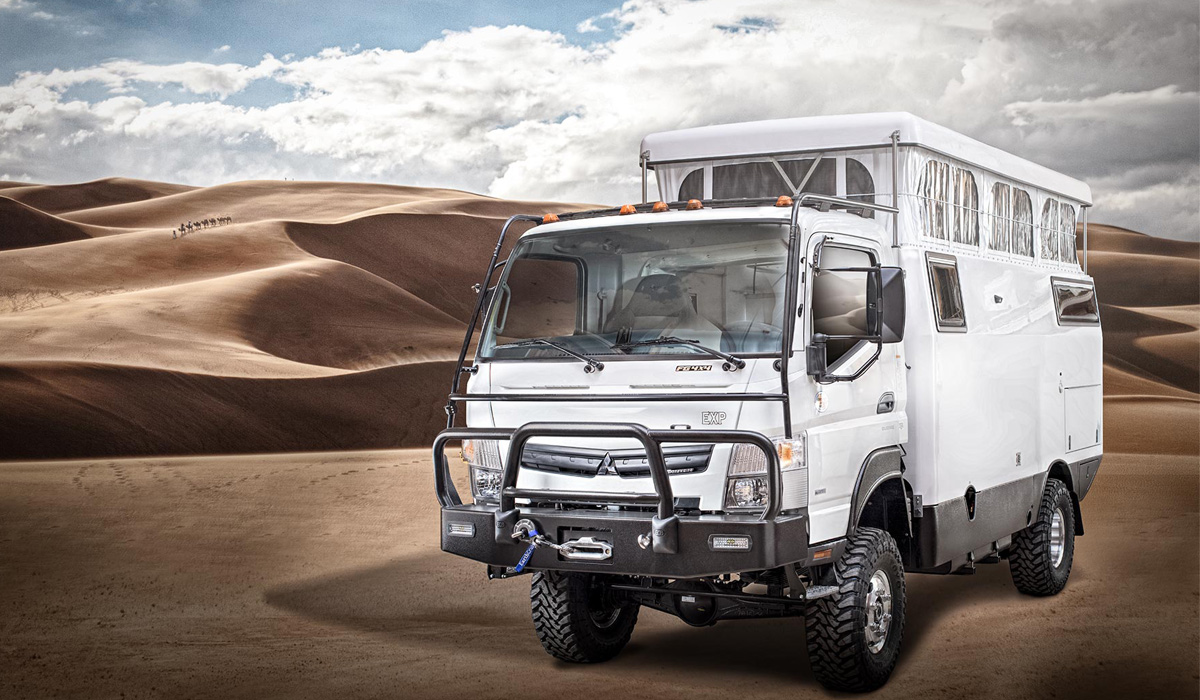Overland vehicle travel is an intense game. Beyond 4×4 travel, beyond “offroad,” overlanding is the practice of exploring the remotest terrain possible. Self-sufficiency is a prerequisite, so campers are the tools of the trade. Combining the capability of an offroad vehicle with the convenience of a house is overlanding’s holy grail. EarthCruiser gives it a shot with its overland camper. You might have to take out a second mortgage to finance one, but when you do, you’ll be rewarded with a sustainable, livable vehicle outfitted for any thinkable contingency.
The Australian-born vehicle maker contends that each of its vehicles “exists with a humble purpose of facilitating true adventure — and nothing more.” Let’s climb into one and see what the bluster is all about.
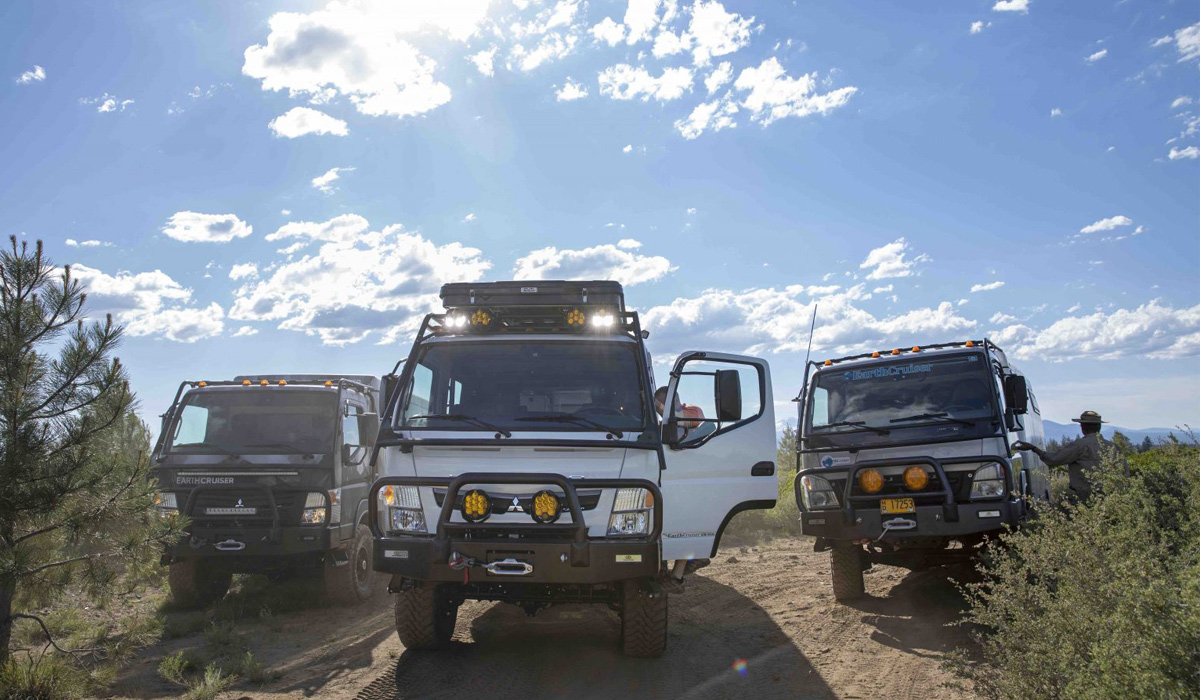
On Point Off-Road: Overland Camper Powertrain
Let’s start from the land — er, the ground — up. EarthCruiser utilizes a Mitsubishi Fuso body-on-frame chassis fitted with axles designed in-house. The full-float rear axle bears the overland camper trailer’s weight while locking hubs and a range of 4WD options handle the rowdiest terrain. The platform is built for versatility: EarthCruiser says its vehicles “perform flawlessly on tight city streets and wide-open sand dunes in the Sahara.”
A 6.0L Vortec V8 powers each truck with 297 HP at 361 lb-ft of torque. Fill it up with regular unleaded and ignore the price display on the pump — the tank holds 60 gallons. Allison handles the 6-speed automatic transmission, but EarthCruiser programs it.
14” disc brakes on all four wheels maximize stopping power and limit rim heating, helpful on long descents.
Wherever you’re going, EarthCruiser gives you a solid chance to get there. But in overlanding, a lot can happen between points A and B. What happens when life happens?
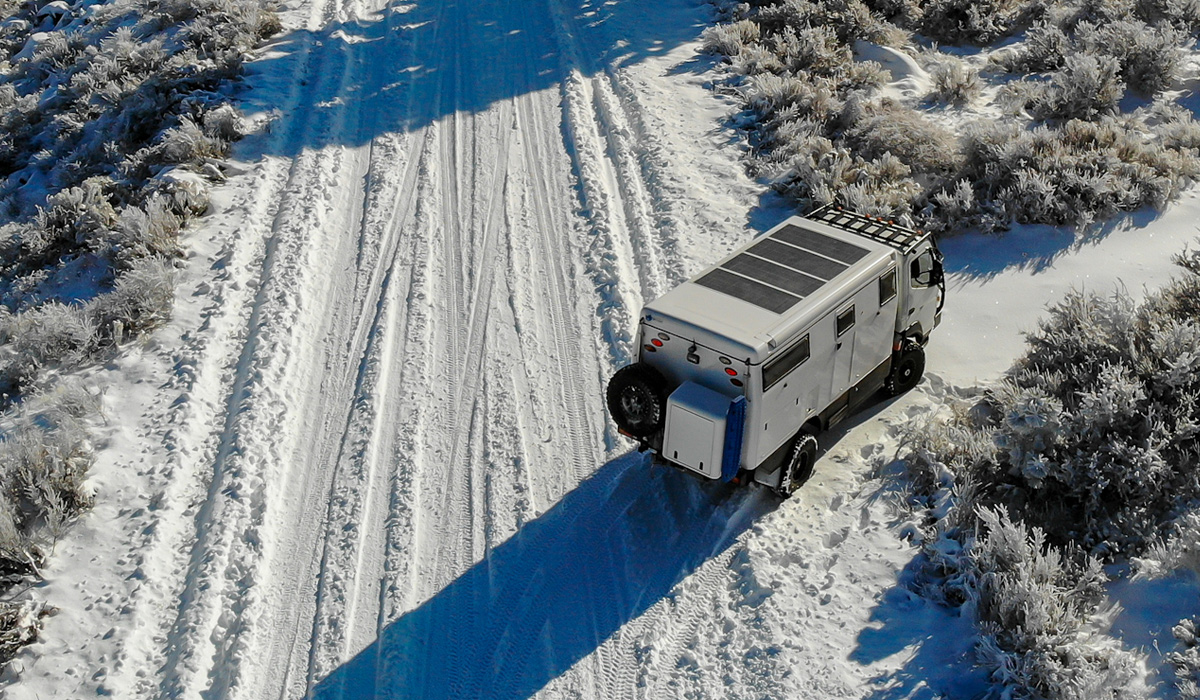
When Life Happens: Safety Features
EarthCruiser prioritizes safety in its overland campers. Priority one is keeping you and your vehicle moving. That’s why EarthCruiser installs a front bull bar (a grill guard on steroids) and custom-fabricated skid plates.
Even so, anyone who’s driven vehicles through enough gnar knows the clock is ticking: getting stuck is inevitable. When it happens, there are recovery points on all sides of the EarthCruiser, so all you need is a sturdy object. Attach the Warn 16.5ti-S heavyweight winch to the overland camper and let it do the rest — 16,500 pounds of pull capacity is plenty to get your rig out of the ditch. If you only need a little added traction, opt for the TRAXX/ax/shovel holder.
Lighting is another vital concern in overlanding. During the day, up to 11 windows allow for plenty of natural light and views. At night, the EarthCruiser camper lights up like the Las Vegas Strip. A cab-controlled Lo-Pro Extreme LED light bar, reverse and drive lights by Vision X, driver and passenger cab ditch lights, and an upgraded off-road light package — is that enough to banish the darkness?
Now that we’ve gone over how EarthCruiser gets you where you’re going safely, let’s talk about what happens when you get there.
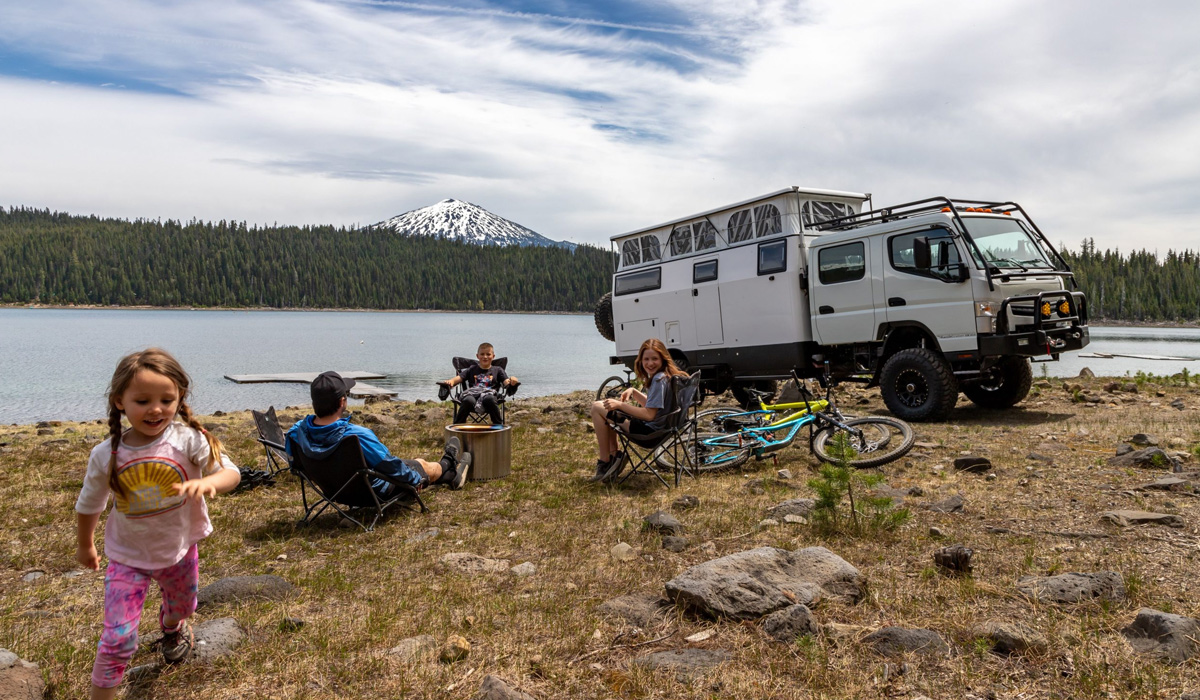
Base Camp: Capable Overland Camper
Living in vehicles can get sloppy: less space means more multi-purpose usage. That multi-use leads to abuse and mess. Thankfully, EarthCruiser designs its overland camper interior for easy pass-through and compartmentalization. Separate sleeping and dining areas, a 150-pound capacity loft, and a compact bathroom shape the space.
EarthCruiser does all it can to keep you powered-up and hydrated: five standard solar panels feed a battery system, complete with backups and 80 gallons of freshwater storage.
If you’re interested in overlanding but more into glamping, you can add a 12v DC-powered air conditioner, microwave, and outdoor kitchen.
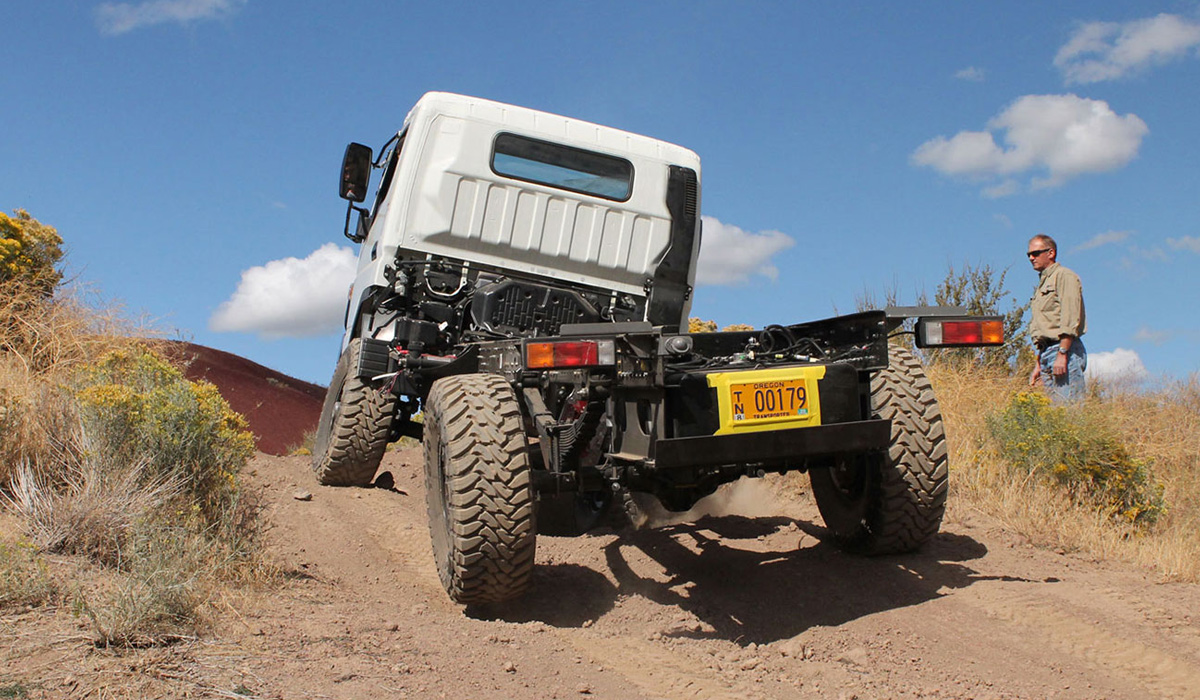
Adventure Time: How To Buy It
There’s no way to sugarcoat it: a new overland camper from EarthCruiser will cost you at least $370,000 as each one is custom-built. Is a house you can drive anywhere worth that cost? That is for you to decide.
